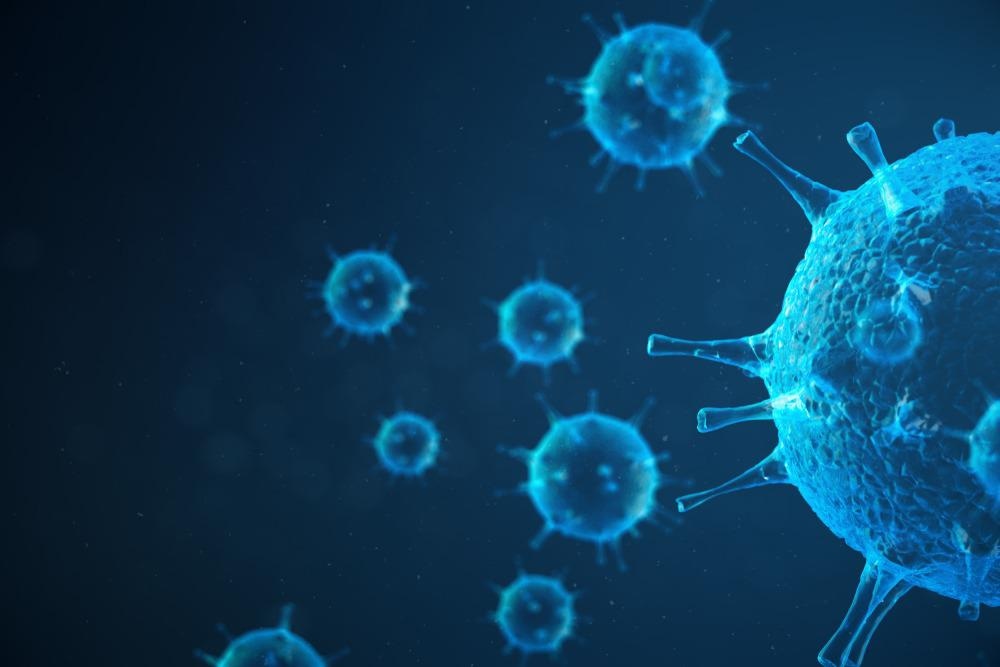Most viral infections currently do not have any antidotes available, giving rise to an innovative approach to treat acute viral infections. An interdisciplinary team of researchers from various universities proposed a solution that consisted of developing DNA nanostructures to trap the viruses and neutralize them. This article will explore the promising use of nano-capsules to engulf and neutralize viruses as a potential viral treatment.

Image Credit: Rost9/Shutterstock.com
Viral infections can be deadly, proven evident by the SARS-CoV-2 COVID-19 pandemic, affecting worldwide mortality rates, with over 190 million deaths recorded as of July 2021. Due to the lack of antibiotics and treatments for viral infections and the lengthy process associated with vaccine development for viruses, the demand for innovative research in viral therapies has grown tremendously.
A collaborative team from the Technical University of Munich, the Helmholtz Zentrum München, and the Brandeis University (USA) have proposed an innovative and novel approach to viral infection treatment. The team's research was published in the journal Nature Materials. With the use of DNA nanostructures, researchers have strategized their potential in trapping viral particles, subsequently neutralizing the viruses and the infection as a whole.
A History of Nanostructures
The scientific origin of nanostructures began in 1962. By discovering the geometrical principles that dictate the structure of viral protein envelopes, biologist Donald Caspar and biophysicist Aaron Klug set the foundations that led to this current research innovation.
The concept of nanostructures was explored by Hendrik Dietz, a biomolecular nanotechnology professor at the Technical University of Munich within the department of physics. Along with the collaborative effort from other research institutes, the concept of artificial hollow bodies was created, thought to be the same size as viruses. This nano-size, typically 1-100 nm, would allow better interaction between the virus and the trapping mechanism, allowing them to more effectively capture these infectious particles.
Nanostructures and Virus Trapping
When exploring the possibility of these nanostructures being able to 'virus trap', researchers theorized that the artificial hollow body would require virus-binding molecules within the structure. In doing so, infectious particles could be tightly bound and removed from the body's circulatory system. However, this would require the nanostructures to have large openings in order for the viruses to enter and become engulfed.
Building stable hollow bodies of this size was a huge challenge.
Hendrik Dietz, Professor, Technical University of Munich
The interdisciplinary team was able to build the hollow bodies from three-dimensional triangular plates for the virus trap and started with the shape of an icosahedron, made up of 20 triangular surfaces. The researchers were able to assemble DNA plates into larger geometrical structures, investigating the correct position of the binding points to program the optimum shape and size of the hollow bodies.
Challenges of Virus Trapping
There are several challenges that this team is attempting to overcome with their innovative virus-trapping strategy. The intrinsic nature of viruses that do not have their own metabolism means that anti-viral drugs are created to target specific enzymes in the virus.
This can create difficulty when developing anti-viral drugs due to the arduous research required for specific enzyme targets within particular viruses. The process can be lengthy, so a promising alternative where viruses can be mechanically eliminated using nanostructures would be a medical breakthrough.
However, this innovative concept of nanostructures as a 'virus trap' utilizes DNA as a building block; this quickly led to the realization that these hollow bodies could be degraded immediately through contact with body fluids. To prevent this from occurring, the team aimed to irradiate the finished building blocks using UV light and treat the outside of the nanostructures with polyethylene glycol and oligolysine. A more stable structure was produced, which has been tested in mice serum to withstand degradation for 24 hours.
The next challenge that the researchers aim to undertake includes testing this novel material in living mice, and hopefully followed by humans, which the lead researcher, Dietz, has confidently stated 'will also be well tolerated by the human body'.
This promising anti-viral treatment would revolutionize medicine and patient care, ensuring patients infected by viruses can be treated and have viral particles completed eradicated from their bodies. Patients would be allowed to live a higher quality of life without facing stigma from carrying a virus without a cure. Improving this aspect of patient care is the most significant outcome of treatments, and with this revolutionary therapy, impactful changes are possible.
References and Further Reading
Christian Sigl, Elena M. Willner, Wouter Engelen, Jessica A. Kretzmann, Ken Sachenbacher, Anna Liedl, Fenna Kolbe, Florian Wilsch, S. Ali Aghvami, Ulrike Protzer, Michael F. Hagan, Seth Fraden, Hendrik Dietz. (2021) Programmable icosahedral shell system for virus trapping. Nature Materials, http://dx.doi.org/10.1038/s41563-021-01020-4
Technical University of Munich (2021) Hollow nano-objects made of DNA could trap viruses and render them harmless. ScienceDaily. [Online] Available at: www.sciencedaily.com/releases/2021/07/210715103043.htm
Rafique, M., Tahir, M., Rafique, M., Safdar, N. and Tahir, R. (2020) Nanostructure materials and their classification by dimensionality. Nanotechnology and Photocatalysis for Environmental Applications, pp.27-44. https://doi.org/10.1016/B978-0-12-821192-2.00002-4
Covid19.who.int. (2021) WHO Coronavirus (COVID-19) Dashboard [Online] Available at: https://covid19.who.int/
Disclaimer: The views expressed here are those of the author expressed in their private capacity and do not necessarily represent the views of AZoM.com Limited T/A AZoNetwork the owner and operator of this website. This disclaimer forms part of the Terms and conditions of use of this website.